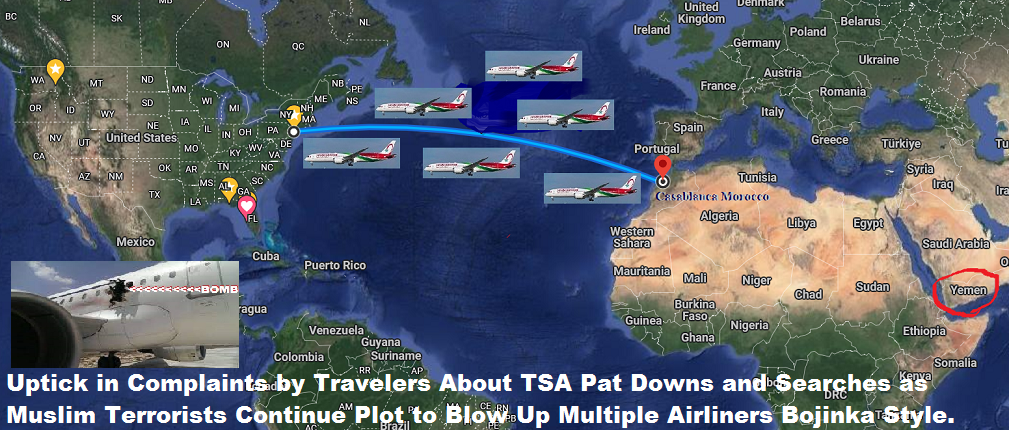The use of liquid explosives (PETN) as a means to circumvent civil aviation security measures remains a key tool of al-Qaeda. The 2010 attempt to send parcel bombs from Yemen to the US attempted to tap into a weak link, much like the Bojinka plot. In 2016, a Daallo Airlines flight was attacked by al-Shabaab terrorists by suborning two airport workers that were able to place an IED armed laptop aboard with a third accomplice who died in the attack. Explosive trace detection technology has advanced to include a broad range of nitrogen- and peroxide-based explosives. However, a layered security program and actionable intelligence is the key to preventing future terrorist attacks on the global civil aviation system.
New Al Qaeda cells or allied groups have sprung up in North Africa, Southeast Asia, and perhaps most importantly in Yemen and Somalia. These groups may have only an informal connection with Al Qaeda's leadership in Pakistan, but they often share common goals. Al Qaeda's recruitment tactics also have changed. The group seeks to recruit American citizens to carry out terrorist attacks in the United States. These Americans are not necessarily of Arab or South Asian descent; they include individuals who converted to Islam in prison or elsewhere and were radicalized, Americans who hate the US Government. Al Qaeda in the Arabian Peninsula, the offshoot of Osama bin Laden's terrorist network operating in Yemen and Saudi Arabia, has evolved into an ambitious organization capable of using non-traditional recruits to launch attacks against American targets within the Middle East and beyond. Evidence of its potential became front-page news after a young Nigerian trained at one of its camps in Yemen tried to blow up a passenger aircraft bound for Detroit on Christmas Day. The suspected bomber was a Nigerian man, Umar Farouk Abdulmutallab, 23, who had overstayed an education visa in Yemen by several months and had undergone explosives training at one of the remote Al Qaeda camps. His father, a respected retired banker and former Nigerian government official, had warned the U.S. embassy in Nigeria about his son's growing radicalism and disappearance while in Yemen, but Abdalmuttallab was able to use a U.S. visa to board the flight in Amsterdam with a bomb sewn into his underwear. He was overcome by passengers and crew members as he tried to detonate the device.
Operation Silves: The 2017 Islamic State Sydney Plane Plot. On July 29, 2017, an Australian counterterrorism operation foiled the most serious Islamic State plot the country has ever faced. Two brothers in Sydney, guided by Islamic State operatives in Syria, had tried to bomb an Etihad plane flying from Sydney to Abu Dhabi carrying 400 passengers. Two of the suspects, Khaled Khayat and Mahmoud Khayat, were charged with conspiracy “to do acts in preparation for a terrorist act” and would later be convicted. There were four key plotters behind the planned attack, two based in Sydney and two based in Syria. The Sydney-based plotters were the brothers Khaled Khayat and Mahmoud Khayat, who were born in the northern Lebanese city of Tripoli. To communicate with each other, Khaled and Mahmoud used WhatsApp. The use of encrypted communication platforms helped the Khayat brothers hide evidence of their actions and would later cause difficulties for the prosecution’s case against them. The type of explosive is pentaerythritol tetranitrate (PETN).
JUNE 2006: British terrorists planned to blow up at least seven transatlantic flights from London, murdering more than 1,500 people in a plot on a scale to rival the September 11 attacks, a jury found today. As three men now GOT sentences after being found guilty of conspiring to explode liquid bombs on airliners flying from Britain to North America, the former head of US homeland security at the time of their arrests has revealed that the threat was taken seriously. The plan involved inserting liquid explosives into empty bottles of Lucozade and Oasis, colouring the liquid so it appeared to be the same as the original. The cell, based in east London and High Wycombe in Buckinghamshire, was supposed to carry out what counter-terrorism officials say was an al-Qaida-inspired suicide mission, motivated by rage at British and US foreign policy. Woolwich crown court, Abdulla Ahmed Ali, Assad Sarwar and Tanvir Hussain were found guilty of conspiracy to murder by detonating the bombs on airliners. The liquid bombs, disguised in drinks bottles, were so ingenious, relying on batteries and detonators carried separately, that they would have bypassed airport security. UK scientists, who constructed versions of the devices, concluded that if exploded, they would have punched a hole in the aircraft skin. The plot was disrupted on 10 August 2006, leading to chaos at airports and restrictions which remain in force today on the amount of liquids travellers can carry aboard.THE GRAND DADDY OF THEM ALL: The Bojinka plot was a large-scale, three-phase terrorist attack planned by Ramzi Yousef and Khalid Sheikh Mohammed for January 1995. They planned to assassinate Pope John Paul II; blow up 11 airliners in flight from Asia to the United States with the goal of killing approximately 4,000 passengers and shutting down air travel around the world; and crash a plane into the headquarters of the United States Central Intelligence Agency (CIA) in Fairfax County, Virginia.
Copyright Protection: Bill Warner Investigations Sarasota Fl Original Articles Published on This Website Using Proprietary Research.




.jpg)
.png)
No comments:
Post a Comment